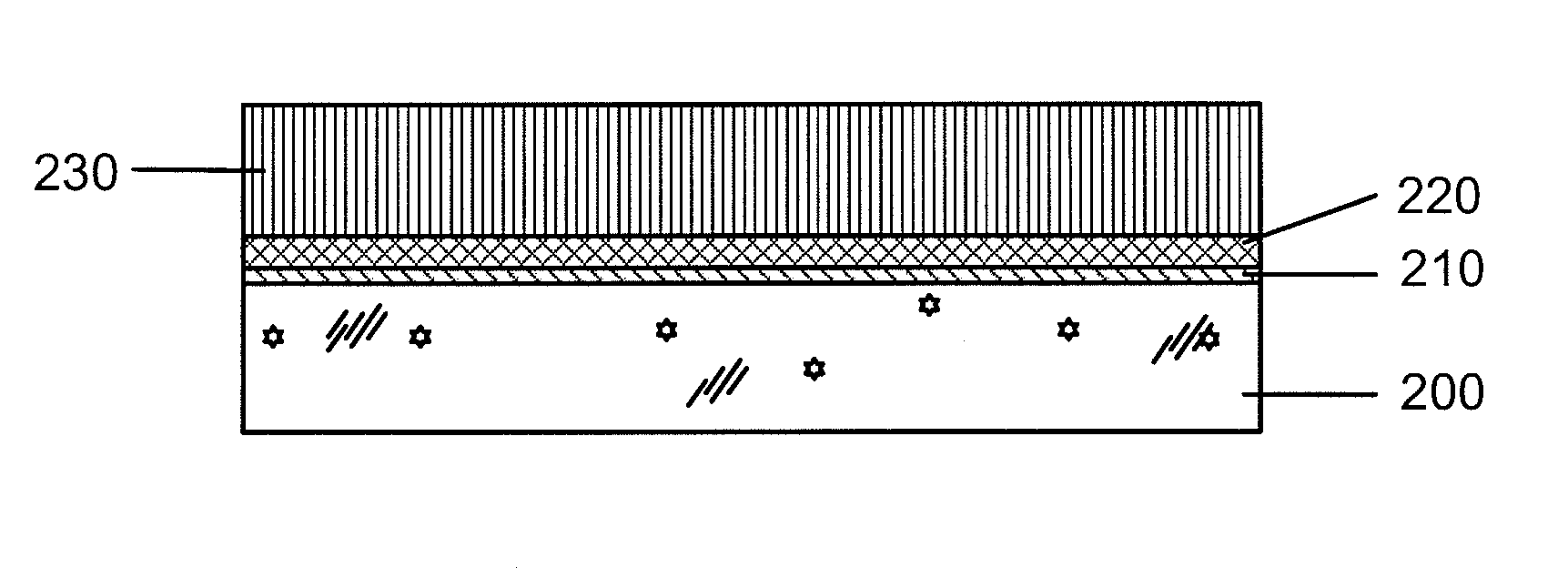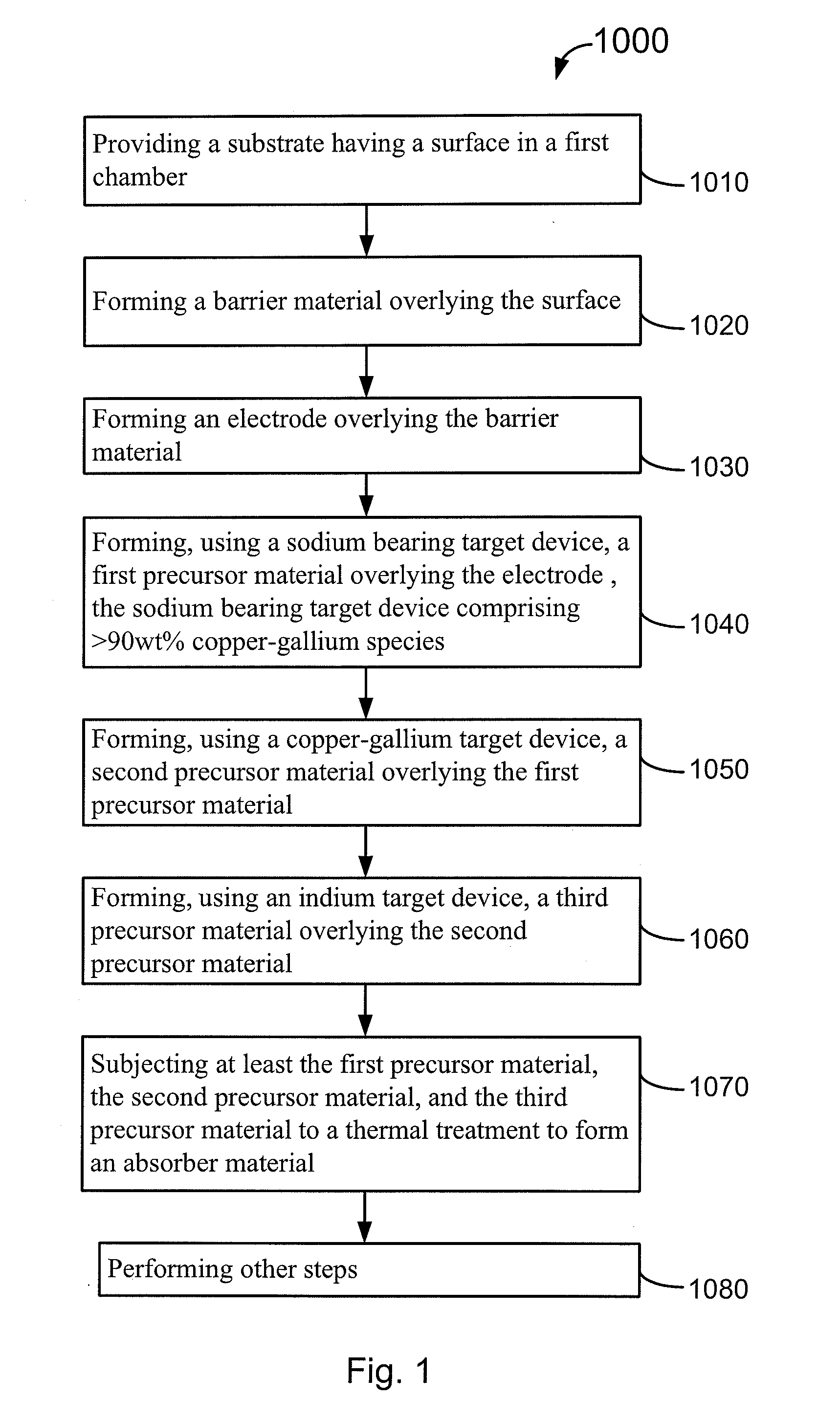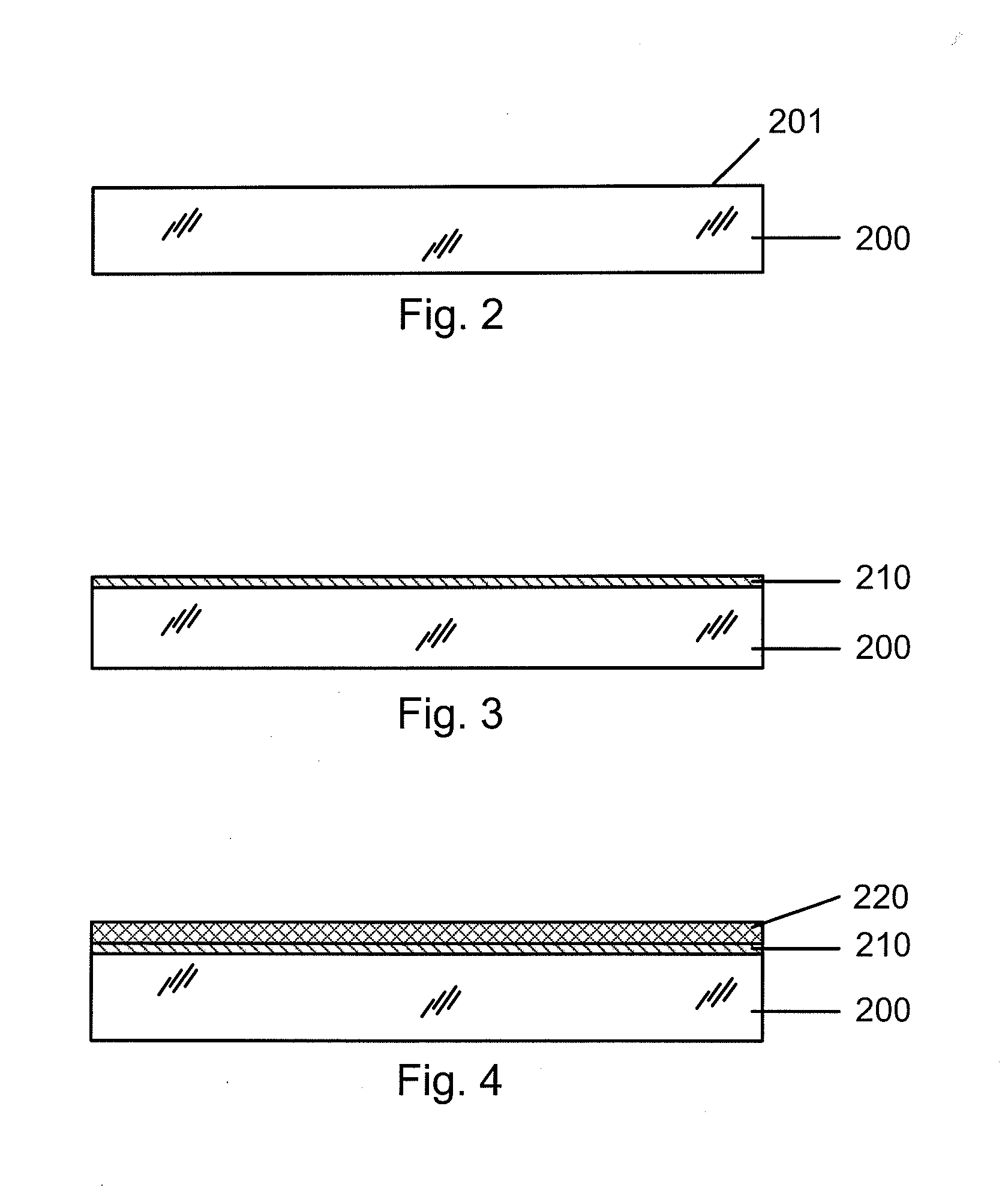Sodium Sputtering Doping Method for Large Scale CIGS Based Thin Film Photovoltaic Materials
- Summary
- Abstract
- Description
- Claims
- Application Information
AI Technical Summary
Benefits of technology
Problems solved by technology
Method used
Image
Examples
Embodiment Construction
[0013]FIG. 1 is a flowchart illustrating a method of fabricating a thin-film photovoltaic material according to an embodiment of the present invention. The method 1000 includes the following processes:
[0014]1. Process 1010 for providing a transparent substrate having a surface;
[0015]2. Process 1020 for forming a barrier material on the surface;
[0016]3. Process 1030 for forming an electrode;
[0017]4. Process 1040 for forming, using a sodium bearing target device, a first precursor material overlying the electrode, the sodium bearing target device comprising >90% copper-gallium species;
[0018]5. Process 1050 for forming, using a copper-gallium target device, a second precursor material overlying the first precursor material;
[0019]6. Process 1060 for forming, using an indium target device, a third precursor material overlying the second precursor material;
[0020]7. Process 1070 for subjecting at least the first precursor material, the second precursor material, and the third precursor mat...
PUM
 Login to View More
Login to View More Abstract
Description
Claims
Application Information
 Login to View More
Login to View More - R&D
- Intellectual Property
- Life Sciences
- Materials
- Tech Scout
- Unparalleled Data Quality
- Higher Quality Content
- 60% Fewer Hallucinations
Browse by: Latest US Patents, China's latest patents, Technical Efficacy Thesaurus, Application Domain, Technology Topic, Popular Technical Reports.
© 2025 PatSnap. All rights reserved.Legal|Privacy policy|Modern Slavery Act Transparency Statement|Sitemap|About US| Contact US: help@patsnap.com



